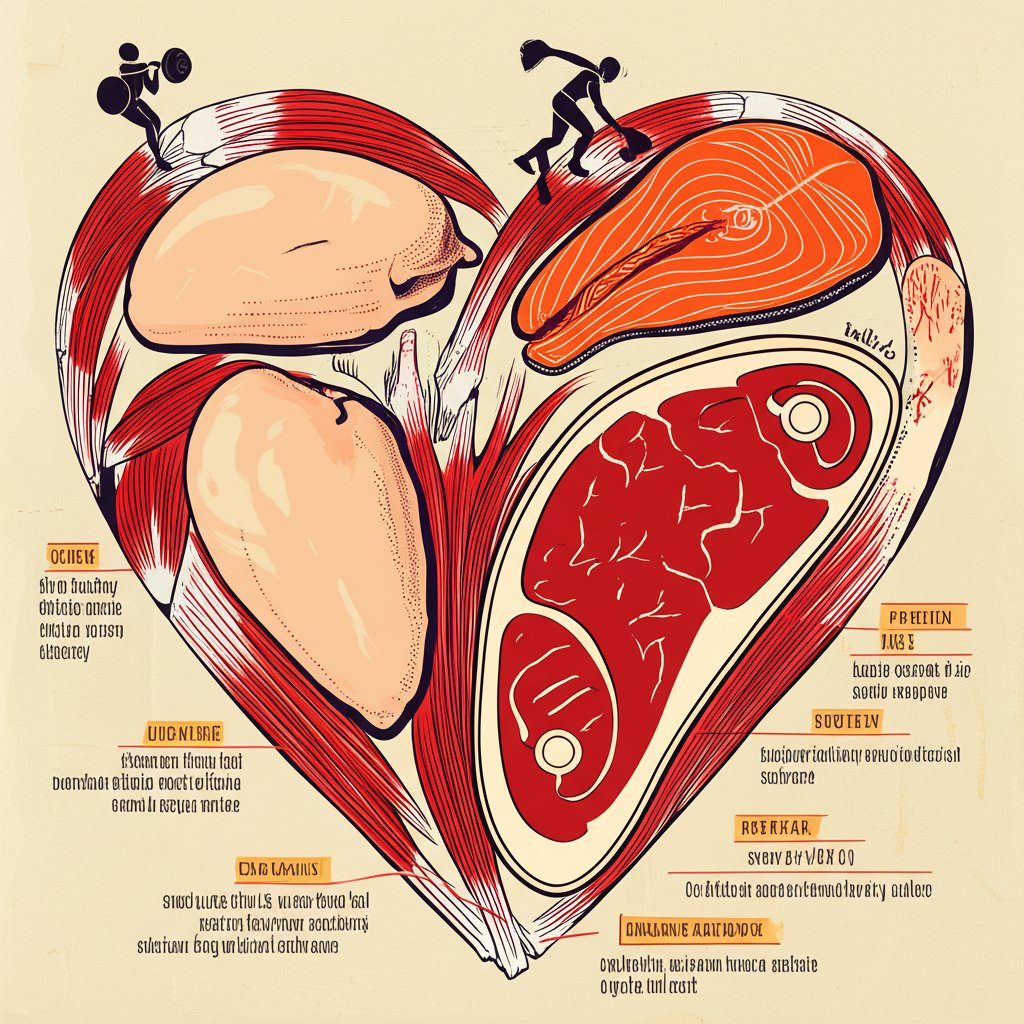Untuk gambaran yang lebih besar dan konteks penuh, pastikan Anda membaca panduan utama kami tentang Jello Nutrition Facts: Whats Really In That Jiggly Dessert?.
markdown
Ever wonder what you’re really biting into when you devour a juicy meatball? Beyond the savory sauce and comforting aroma, understanding meatball nutrition facts can help you make informed choices, whether you’re watching your sodium intake or trying to boost your protein.
At a glance:
- Discover the common nutritional profile of meatballs (calories, protein, fat, sodium).
- Learn how different meat types (beef, pork, turkey, vegetarian) impact the nutritional value.
- Understand how preparation methods (frying, baking, simmering) affect the fat and calorie content.
- Get tips for making healthier meatball choices and modifying recipes.
- Debunk common myths and misconceptions about meatball nutrition.
The Basic Building Blocks: A Standard Meatball Breakdown
Before diving into specifics, let’s establish a baseline. A typical, medium-sized (approximately 1 ounce) meatball, made from a blend of ground beef and pork, offers a snapshot of the following meatball nutrition facts:
- Calories: 70-80
- Protein: 5-7 grams
- Fat: 5-6 grams (can vary significantly depending on the lean-to-fat ratio of the meat)
- Sodium: 150-250mg (again, highly dependent on added salt and ingredients in the recipe)
- Carbohydrates: 2-4 grams (primarily from breadcrumbs or other fillers)
Keep in mind this is just a general guide. The actual numbers can swing wildly depending on the ingredients and preparation.
Meat Matters: How Different Proteins Change the Game
The type of meat used is the single biggest determinant of meatball nutrition facts. Let’s compare some common options:
- Beef Meatballs: Often higher in saturated fat than other varieties, especially if ground beef with a higher fat percentage is used. Choose lean ground beef (90/10 or 93/7) to reduce the fat content.
- Pork Meatballs: Similar to beef in terms of overall fat content, but the specific type of fat can vary. Pork can also be relatively high in sodium depending on how it’s processed.
- Turkey Meatballs: Generally lower in fat and calories compared to beef and pork, offering a leaner protein source. However, some turkey meatballs can be surprisingly high in sodium, so always check the label.
- Chicken Meatballs: Similar to turkey, a good leaner alternative if made with ground chicken breast.
- Vegetarian/Vegan Meatballs: These can vary greatly depending on the ingredients. Some may be high in fiber and plant-based protein but also high in sodium or unhealthy fats, depending on the binders and flavorings used. Consider options made with lentils, beans, or quinoa.
Example: Switching from ground beef (80/20) to ground turkey breast can cut the fat content per meatball by almost half.
Cooking Methods: How You Cook Affects What You Get

The way you cook your meatballs also has a significant impact on their nutritional profile, particularly concerning fat and calorie content.
- Frying: Cooking meatballs in oil adds a substantial amount of fat and calories. The meatballs absorb the oil, increasing their overall fat content.
- Baking: A healthier alternative to frying. Baking allows the fat to render out of the meatballs, reducing the overall fat content. Line your baking sheet with parchment paper to prevent sticking.
- Simmering: Simmering meatballs in a sauce (tomato sauce, broth, etc.) is another good option. The meatballs release some fat into the sauce, which you can then skim off.
- Air Frying: Offers a compromise between frying and baking, providing a crispy exterior with less added fat.
Case Snippet: A restaurant switched from frying their meatballs to baking them, resulting in a 20% reduction in fat content per serving.
Decoding the Sodium Situation
Meatballs can be surprisingly high in sodium, primarily from added salt, breadcrumbs, and processed ingredients. Here’s how to manage it:
- Read Labels Carefully: Pay close attention to the sodium content per serving, especially if you’re buying pre-made meatballs.
- Make Your Own: Making meatballs from scratch allows you to control the amount of sodium added. Use low-sodium breadcrumbs or omit them altogether.
- Use Herbs and Spices: Flavor your meatballs with herbs, spices, and garlic instead of relying on salt for flavor.
- Rinse Canned Ingredients: If using canned beans or vegetables in your meatballs, rinse them thoroughly to remove excess sodium.
Practical Tip: Try using a salt substitute (like potassium chloride) in moderation to reduce sodium content without sacrificing flavor.
Building a Better Meatball: Recipe Tweaks for Healthier Choices

Want to enjoy meatballs without the guilt? Here’s a playbook of actionable recipe modifications:
- Swap the Meat: Replace ground beef or pork with leaner options like ground turkey breast or chicken breast.
- Add Veggies: Incorporate finely chopped vegetables like zucchini, carrots, or spinach to add fiber and nutrients while reducing the amount of meat needed.
- Use Whole Grain Breadcrumbs: Opt for whole-grain breadcrumbs over white breadcrumbs to increase fiber content.
- Skip the Breadcrumbs: Use rolled oats, ground flaxseed, or almond flour as a binder instead of breadcrumbs.
- Bind with Egg Whites: Use egg whites instead of whole eggs to reduce cholesterol and fat.
- Bake, Don’t Fry: Always bake your meatballs instead of frying them.
- Control the Sodium: Use low-sodium ingredients and limit added salt.
- Choose a Healthier Sauce: Opt for a tomato-based sauce instead of a cream-based sauce to reduce fat content.
Example: A home cook replaced half the ground beef in their meatball recipe with shredded zucchini, resulting in lower calories and increased vegetable intake.
Common Meatball Myths – BUSTED!
- Myth: All meatballs are unhealthy.
- Fact: Meatballs can be a healthy part of your diet if you choose lean meats, use healthy cooking methods, and control portion sizes.
- Myth: Vegetarian meatballs are always healthier than meat-based meatballs.
- Fact: Vegetarian meatballs can be high in sodium, unhealthy fats, and processed ingredients. Always check the label.
- Myth: You can’t make flavorful meatballs without salt.
- Fact: Herbs, spices, garlic, and other flavor enhancers can create delicious meatballs without relying on salt.
- Myth: Baking meatballs always makes them dry.
- Fact: Baking meatballs at a moderate temperature and basting them with sauce during cooking can keep them moist and flavorful.
Speaking of flavor, consider how different dishes can impact your overall nutrition. You can explore more about balanced eating by looking at Jello’s Nutritional Value Explored.
Quick Answers: Your Meatball FAQ
- Q: How many calories are in one meatball?
- A: It depends on the size, ingredients, and cooking method. A typical medium-sized (1 ounce) meatball contains around 70-80 calories.
- Q: Are meatballs a good source of protein?
- A: Yes, meatballs are a good source of protein, typically providing 5-7 grams per meatball.
- Q: How can I reduce the fat content of my meatballs?
- A: Use leaner meats, bake instead of fry, and add finely chopped vegetables.
- Q: Can I freeze meatballs?
- A: Yes, meatballs freeze well. Allow them to cool completely before freezing in an airtight container.
- Q: What are some healthy side dishes to serve with meatballs?
- A: Whole-wheat pasta, brown rice, quinoa, roasted vegetables, or a salad.
Your Meatball Action Plan: A Healthier Start
Ready to make smarter meatball choices? Here’s a simple decision tree:
- Choose Your Meat: Lean ground turkey or chicken breast vs. ground beef or pork?
- Consider Add-Ins: Veggies like zucchini or carrots? Whole-grain or no breadcrumbs?
- Cooking Method: Baking, simmering, or air frying vs. frying?
- Sauce Selection: Tomato-based vs. cream-based?
- Sodium Control: Low-sodium ingredients and minimal added salt?
By answering these questions and implementing the tips outlined above, you can enjoy delicious meatballs while staying on track with your health and nutrition goals. Now go forth and create your perfect, healthier meatball!
- Male Eating Disorders Often Missed but Increasingly Prevalent - October 29, 2025
- Males With Anorexia Nervosa Have Distinct Symptoms and Treatment Needs - October 28, 2025
- Weight Loss for Men Builds Habits for Lasting Success - October 27, 2025










